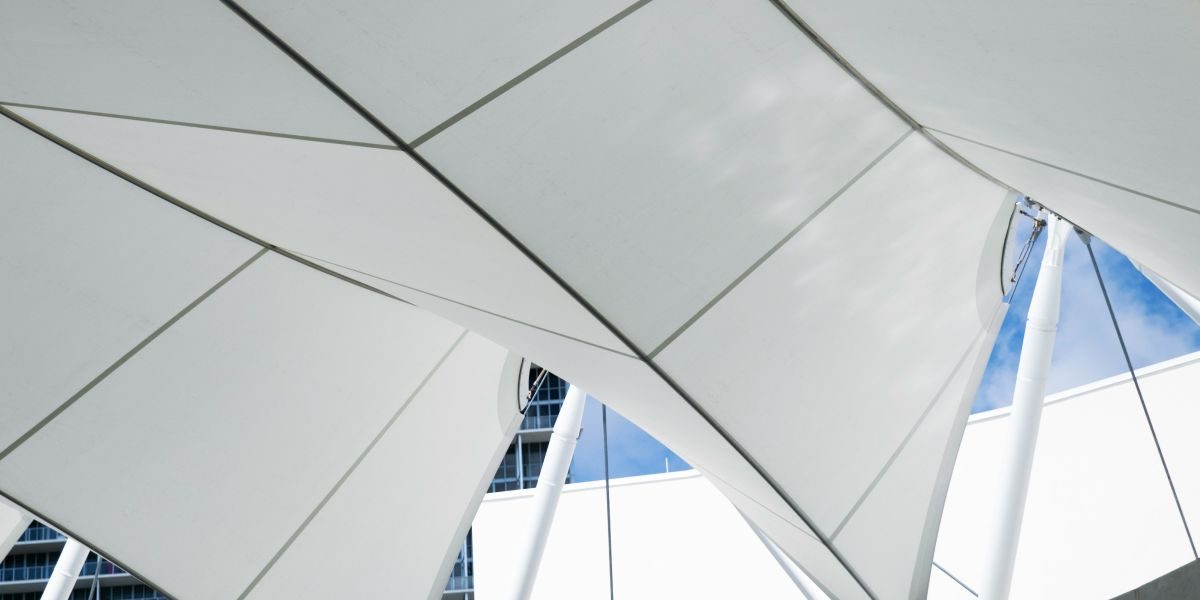Sustainability is no longer just a buzzword in architecture—it is a fundamental priority shaping the way we design and construct buildings today. As environmental awareness grows and regulations tighten, architects, engineers, and developers are seeking innovative solutions that reduce ecological footprints while delivering functional, beautiful spaces. Among these innovations, fabric buildings have emerged as a game-changer in sustainable architecture, redefining what it means to create eco-friendly, efficient, and adaptable structures.
In this comprehensive blog, we will explore the rise of fabric buildings within the realm of modern design, their environmental benefits, and practical insights into installing a fabric building.
What Are Fabric Buildings?
Fabric buildings, also known as fabric structures or tensile membrane buildings, are structures that use a steel or aluminum frame covered by a durable, weather-resistant fabric membrane. Unlike traditional construction materials such as concrete, brick, or wood, fabric membranes are lightweight, flexible, and highly engineered for strength, allowing these buildings to cover large areas without internal columns or heavy foundations.
This innovative design approach enables rapid construction and adaptability, making fabric buildings ideal for diverse uses—from sports facilities and warehouses to agricultural shelters and commercial spaces.
Why Fabric Structures Are the Future of Sustainable Architecture
Lower Environmental Impact in Construction
Fabric buildings require significantly fewer raw materials than traditional buildings. The lightweight steel frames use less metal overall, and the fabric coverings drastically reduce the volume of concrete and other heavy materials needed. This leads to:
Reduced carbon emissions from material production and transportation
Less waste generation on-site during construction
Faster project timelines that reduce energy consumption associated with extended builds
Energy Efficiency and Natural Lighting
The fabric membranes used in these buildings are often translucent, allowing natural daylight to permeate the interior. This reduces the need for artificial lighting during the day, cutting electricity use and lowering operational costs.
Some modern fabric membranes also incorporate reflective coatings or insulating layers that help control interior temperatures by minimizing heat gain in summer and heat loss in winter. This reduces the demand for heating, ventilation, and air conditioning (HVAC) systems, major contributors to a building’s energy footprint.
Flexibility and Longevity
Fabric buildings are designed for adaptability. Their modular construction allows them to be expanded, relocated, or repurposed with minimal environmental impact, extending their useful life compared to fixed, permanent structures.
The high-quality architectural fabrics used today are engineered to last 20+ years with proper maintenance. When their lifespan ends, many fabrics can be recycled, further supporting circular economy principles.
Popular Sustainable Applications of Fabric Structures
The versatility and green benefits of fabric buildings have inspired their use across many sectors embracing sustainability, including:
Agriculture: Shade structures and storage facilities that protect crops and equipment while reducing energy use.
Sports and Recreation: Gymnasiums, stadiums, and arenas that benefit from natural lighting and fast installation.
Industrial and Commercial: Warehouses, workshops, and distribution centers that prioritize efficient use of materials and energy.
Event Spaces: Temporary or semi-permanent venues that can be assembled and dismantled with minimal site impact.
These varied uses highlight the growing acceptance of fabric buildings as a legitimate, sustainable architectural solution.
Key Considerations When Installing a Fabric Building
While fabric buildings bring many environmental and practical benefits, proper fabric building installation is crucial to maximize their performance and sustainability.
Site Preparation and Foundation
Though fabric buildings are lighter than traditional structures, they still require solid foundations tailored to soil conditions and expected loads (wind, snow, seismic activity). Proper site preparation ensures stability and longevity.
Frame Assembly
The steel or aluminum frame must be precisely assembled following engineering specifications to help guarantee structural integrity. The modular nature of these frames often allows for quick on-site assembly.
Fabric Installation
Installing the fabric membrane involves stretching and securing the fabric over the frame without wrinkles or slack. This process requires specialized expertise to prevent damage and ensure weather-tightness.
Customization and Finishing
Adding doors, ventilation, lighting, and other features can optimize building performance for specific uses, contributing to occupant comfort and energy savings.
Overcoming Misconceptions About Fabric Buildings
Despite the numerous benefits, some people remain hesitant about fabric buildings due to misconceptions about durability or aesthetics.
Durability: Modern fabric membranes are engineered for strength and resistance to UV rays, wind, fire, and harsh weather conditions. When combined with steel frames, they offer a robust structure that can outlast many traditional buildings.
Aesthetic Appeal: Fabric buildings today come in various colours and designs, allowing architects to incorporate them seamlessly into modern urban or rural landscapes.
Cost: While initial costs are often lower than conventional construction, the real savings come from reduced energy consumption, maintenance, and faster build times.
Looking Ahead: The Growing Role of Fabric Structures in Green Building Certifications
As green building certifications like LEED and WELL become more influential, fabric buildings are gaining recognition for their sustainability contributions. Their low embodied carbon, energy-efficient design, and recyclability align well with certification criteria, making them a preferred choice for projects targeting these standards.
The rise of fabric structures represents an exciting shift in sustainable architecture, combining environmental responsibility with design innovation and practical versatility. Whether you’re planning a new industrial facility, a sports venue, or an agricultural shelter, fabric buildings offer compelling benefits that align with the priorities of modern design.
Embrace the future of sustainable architecture by considering fabric buildings—smart, stylish, and green.
















